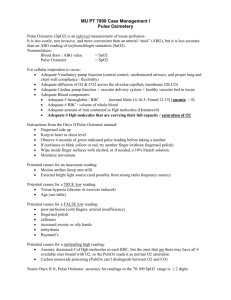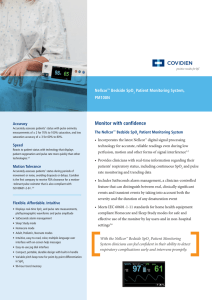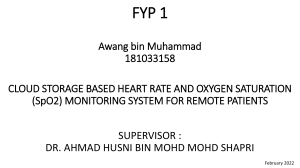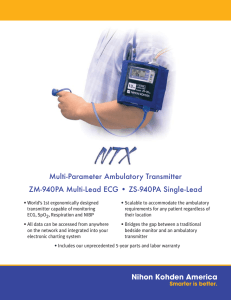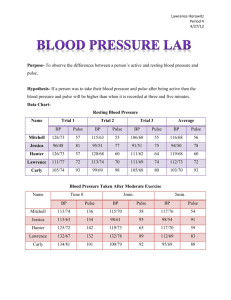Protocol for pulse oximetry when guiding at high altitude
advertisement
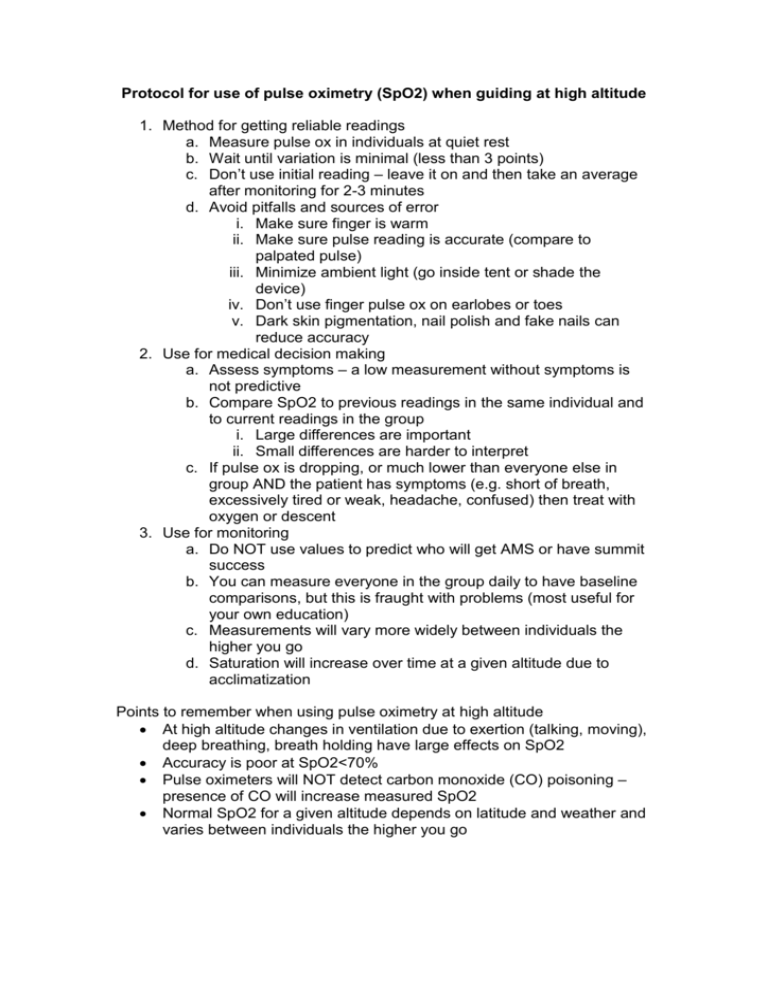
Protocol for use of pulse oximetry (SpO2) when guiding at high altitude 1. Method for getting reliable readings a. Measure pulse ox in individuals at quiet rest b. Wait until variation is minimal (less than 3 points) c. Don’t use initial reading – leave it on and then take an average after monitoring for 2-3 minutes d. Avoid pitfalls and sources of error i. Make sure finger is warm ii. Make sure pulse reading is accurate (compare to palpated pulse) iii. Minimize ambient light (go inside tent or shade the device) iv. Don’t use finger pulse ox on earlobes or toes v. Dark skin pigmentation, nail polish and fake nails can reduce accuracy 2. Use for medical decision making a. Assess symptoms – a low measurement without symptoms is not predictive b. Compare SpO2 to previous readings in the same individual and to current readings in the group i. Large differences are important ii. Small differences are harder to interpret c. If pulse ox is dropping, or much lower than everyone else in group AND the patient has symptoms (e.g. short of breath, excessively tired or weak, headache, confused) then treat with oxygen or descent 3. Use for monitoring a. Do NOT use values to predict who will get AMS or have summit success b. You can measure everyone in the group daily to have baseline comparisons, but this is fraught with problems (most useful for your own education) c. Measurements will vary more widely between individuals the higher you go d. Saturation will increase over time at a given altitude due to acclimatization Points to remember when using pulse oximetry at high altitude At high altitude changes in ventilation due to exertion (talking, moving), deep breathing, breath holding have large effects on SpO2 Accuracy is poor at SpO2<70% Pulse oximeters will NOT detect carbon monoxide (CO) poisoning – presence of CO will increase measured SpO2 Normal SpO2 for a given altitude depends on latitude and weather and varies between individuals the higher you go
